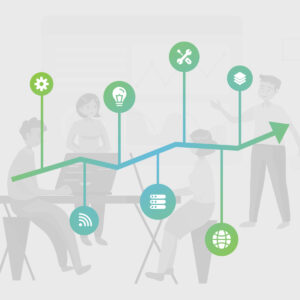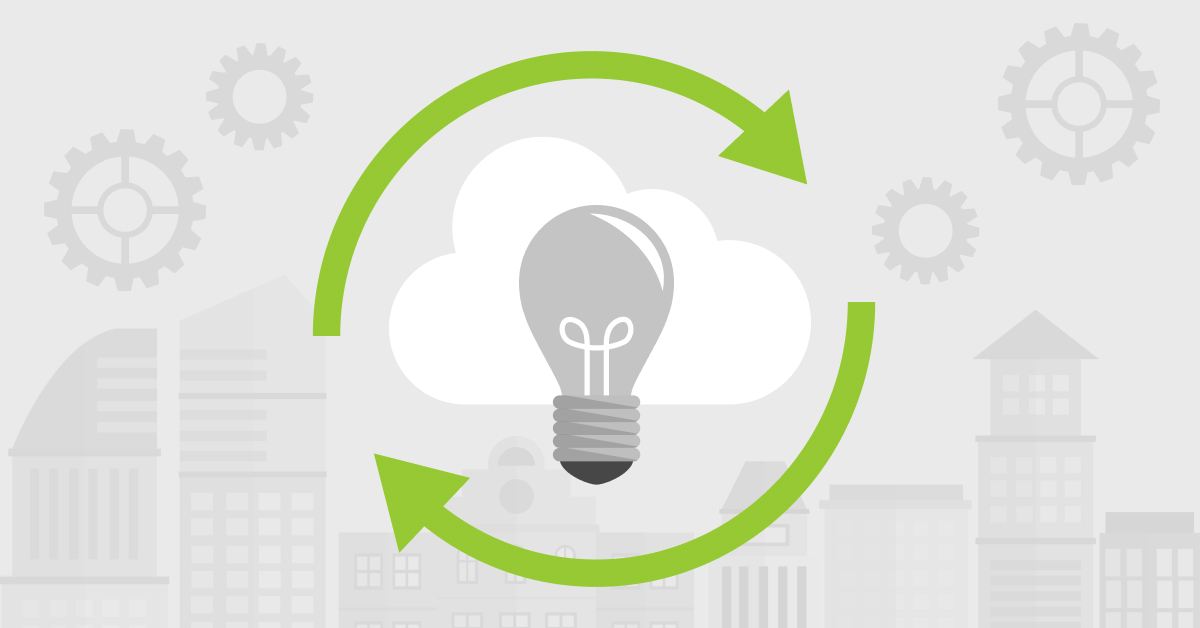Today’s most successful technology brands exist in a near constant state of learning and development (L&D). That’s because the ‘Agile’ methodology they use to manage the evolution, testing, and deployment of new products demands rapid and iterative thinking based on the latest data. In fact, the ability of project teams to absorb and utilize new information is often as important to their success as the products themselves. In other words, rapid learning is more than a skill set for these brands. It’s part of their DNA.
For their customers and partners, this approach results in access to the type of bleeding edge technologies that we’ve all come to enjoy and are driving everything from logistics to space flight. However, this core competency has also produced a more subtle, but growing, downstream knowledge gap – one that’s resulted in a variety of organizational pain points including the ability to understand, utilize, or sell technology products and services to their maximum potential.
Many leading technology providers partner with a wide range of outside organizations to advocate for their products and services. Companies can’t turn everyone in their extended network into top-level engineers, but they do have a vested interest in ensuring that they understand the technological landscape. Fostering deep insights into how products may be combined to deliver industry leading performance and value is core to a company’s success, but also presents one of its most enduring challenges.
Many tech leaders are struggling to reconcile the type of fast paced and continuous learning style endemic to their day-to-day business operations with the realities of their partner’s limited L&D infrastructure.

The Importance of Continuous Learning in Technology
While most players in the technology space realize that a better understanding of an OEM’s IP gives them a distinct competitive advantage – including the ability to deliver best-in-class solutions – they have little to no experience implementing the kind of continuous learning experiences needed to support them. Predictably, this results in a distinct schism between the provider and the partner wherein both organizations fail to meet their goal because the products’ potential aren’t properly represented or even applied.
Sometimes this comes down to a pure knowledge gap. More often, the challenge stems less from access to product information than an effective way to continually and quickly ingest, process, and re-distribute it to the relevant organizational stakeholders.
All of this begs a question: In a world where even academic institutions are having trouble keeping pace with the speed of tech, how can technology providers extend their existing L&D framework in a way that supports commensurate growth among partners.
Technology is the fastest growing business ecosystem on the planet. OEMs who don’t work to enfranchise partners through the development of continuous learning ecosystems will begin to struggle as competitors who do a better job of communicating its value propositions and differentiators pull ahead.
The Case for Continuous Learning
Technology based L&D is unique. In many cases, success isn’t measured so much by the dissemination of static learning materials or milestones, as the ability to deliver highly contextual micro-content at scale. In other words, this isn’t a matter of getting employees to the latest seminar or certification. That won’t work. It’s about building the type of dynamic, just-in-time learning strategies that require smart content and even smarter ways of delivering it.
Building a continuous learning strategy represents a fundamental shift in attitudes about learning. This is a simple, but important, decision to embrace and prioritize continuous learning as a core aspect of your business operations. Of course, this looks a little different for every business, but without it, the path forward is dubious at best.
If you’re struggling to win over your team, here are a couple of cases for why investment in the continuous learning concepts described here are important:

- The decay rate in technology-based skills has increased ten-fold, jumping from decades to years, and in some cases months. Serving learners with on-demand courses on the latest technology will ensure they are able to keep your business ahead of the curve.
- Tech-focused organizations of the future will need to build learning initiatives that continually support and improve employees’ competencies to stay a player in a uniquely competitive hiring ecosystem.
- Once relegated to the IT department, technology and the concepts that drive it, such as AI & Data Science are becoming a larger part of the everyday conversation from HR to marketing.
Once you’ve established that these challenges present a real threat, it’s time to start building a plan.
Building Your Continuous Learning Strategy
There’s never a “one size fits all” strategy for learning and development. That holds true for the continuous learning methodology, but we can provide some guide rails for your journey, as well as examples of what a successful program might look like:
Planning
The continuous learning journey always sits within a cyclical framework. You can pick whatever shape, flow, or diagram works best for your organization. As the name implies, however, the heart of that framework should be a series of iterative touchpoints that can be returned to as often as needed. Contrary to the name, touchpoints in continuous learning don’t always happen in series. Your journey should have several on and off ramps allowing learners to move from point to point based on the knowledge entailed, as the need arises.
Next, you want to decide what each stage in your journey is trying to accomplish. Each touch point should correlate with a subsection of your general organizational stack, but can be organized in a number of ways. They include categories such as:
- Types of Engagement
- Learning Outcomes
- Brand Storytelling
- Levels of Expertise
- Products and Services
You can look at starting your framework by scoping each goal in the journey in a non-linear way. Picture this as a wheel, in which the learner eventually returns to the top, acquiring fresh product knowledge and undergoing the cycle over and over through a continuous learning and development program. Learners are able to engage the journey at whatever point is most needed at the time they access it.
By starting with non-linear goals, the companies are able to begin breaking down each phase in the journey. This will help quantify what continuous learning looks like at each stage of the learner’s progression.
Development
It’s time to fill in each of the endpoints in your continuous learning model with instructional content. The specific materials used in your journey will, of course, vary by vertical, objective, and so on. We can offer some basic guidance on the type and volume of content that is often most successful in the continuous learning model, however.
Above all, it’s important to remember that it’s not realistic to believe that the bulk of your organization’s product knowledge can or should be communicated through the type of single-serve PowerPoint slide decks that are the main-stay of traditional learning and development models. Information delivered in this manner decays up to ten times as quickly as situational learning – or learning that is delivered within the context of a specific problem. Content should be packaged so that it’s snackable, dynamic, and contextual.
This isn’t to say that everyone should throw out their existing classroom-based content. Rather, we should stop relying on them as a lifetime solution – particularly in fields that are expanding rapidly, like AI, Data Science, Cyber Security, Cloud Computing, and the like. Continuous learning relies on developing a person’s established knowledge and continuously building on it through easy to access content and support.
Successful companies embrace the entire content ecosystem. They send their learners on a continuous journey where employees and partners undergo product and solutions training, eventually moving on to more informal learning, including rich media, one-on-one coaching, community discussion, etc.
Distribution
Once you’ve outlined your journey and started building content to fill it in, it’s time to think about how you’re going to deliver it. One important lesson from the L&D ecosystem that’s changed quite a bit in the last decade is that trying to avoid the fragmented nature of today’s technological and in-person ecosystems is a losing proposition.
Your learners likely have limited time outside of their existing work and job duties, never mind family and other responsibilities. That means that learning often takes place in the margins – most likely remotely and sometimes via mobile devices. Luckily, cloud learning solutions enable organizations to deliver a just-in-time format, providing on demand L&D content to employees whenever and wherever they may be.
Building a blended learning curriculum that utilizes instructor led virtual classrooms as well as self paced digital interactions is a great option. By offering this type of on-demand training as new technologies emerge, partners are always set up for success to deliver solutions best fit for a company’s customers. This education model has a direct impact, will help drive industry-leading expertise, and help companies provide stronger outcome-driven solutions.
In Closing
Learning journeys that lead to strong ROI come about when organizations leverage scalable, on-demand L&D-based initiatives. Learning-as-a-service, just-in-time learning solutions, and advanced visual storytelling are all strategies companies should consider when furthering their commitment to continuous learning. By embedding them into the fabric of the business, they can foster greater engagement among employees and partners and ultimately impact the business bottom line dramatically.
As with most things in life, actions speak louder than words. Oftentimes the most difficult challenge within a continuous learning program can be the implementation. Whether you’re just starting the digital transformation of your L&D program or need the expertise to help implement it, Skill-Up Technologies will be here to help you get going.


